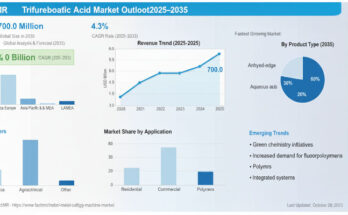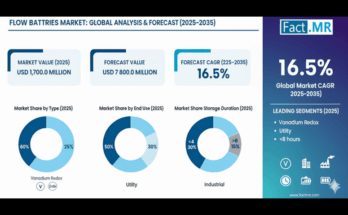Food leftovers and the waste generated during production, processing, and distribution within the food and beverages industry continues to create rampant food wastage volumes.
As an integral part of the sustainable food waste management system, food recycling machines serve to convert food waste into products or materials that are useful in terms of achieving sustainability of the environment.
Food recycling machines tend to reduce both the weight and volume of wasted food scrap by almost 80-90%, delivering the output suitable for usage as manure or organic fertilizer. Collection, separation, and recycling are the three key steps of a typical food waste recycling procedure.
At present, food waste recycling machines are witnessing promising demand owing to the increasing number of proactive sustainable waste management initiatives, strongly complemented by visibly strong adoption within the restaurants sector as well as across the largest retail channels such as supermarkets.
Consistently soaring levels of food waste generation and reported incompetency of conventional food waste composting methods are also likely to underpin the demand growth of food recycling machines.
The food recycling machines market is expected to take off in coming years, as both, the need for disposal costs reduction and the concerns regarding noxious emissions, intensify. Food waste recycling machine manufacturers are exploring opportunities created as a result of the shift of food waste from landfills to waste-to-energy plants.
The US (particularly the Macon-Bibb Commission) and European waste management legislation mandates privatization of food waste management practices – targeting households, and development of food waste recycling machines – targeting food manufacturers, retail sectors, and service providers.
Agricultural waste also constitutes a major portion of the food waste and thus, the Food and Agriculture Organization (FAO) and the Ministry of Agriculture, Forestry, and Fisheries have been monitoring food waste in the agricultural industry. The tightening regulations related to food waste management will favor the demand for food recycling machines.
ROR (retail organic recycling) of food and other organic waste is trending in the market recently, potentially delivering dual benefits – sustainable and economic, owing to the budget-friendly and efficient disposal design.
While the leading brands in food recycling machines market are highly likely to concentrate on commercialization of low-capacity food recycling machines, NPD and production facility expansion will remain their priority over the coming years. A majority of brands in food recycling machines manufacturing space are investing efforts in offering value-based products, intending a stronger global footprint.
- Whirlpool Corporation, among the pioneers of the development of automatic food recycling machines, launched Zera Food Recycler that transforms food waste scrap to organic fertilizer within a 24-hour cycle.
Some of the prominent manufacturers of food recycling machines are likely to heavily invest in R&D, besides a few other key developmental strategies, including collaborative initiatives with top-notch research institutions.
- Singapore-based Westcom Solutions Pte Ltd has been a significant contributor to Asia’s food waste management initiative. The company has constantly focused on extensive R&D of innovative food waste management solutions, preferably organic, using microbes. Westcom is a recognized brand of a novel range of food waste fermentation and decomposition machines, highly convenient and delivering excellent performance.
- Emphasizing multidimensional sustainability, Westcom’s food recycling machines significantly prune the transportation and incineration costs. The company’s signature bio-engineering technology is claimed to be ideal for food recycling and waste management applications.
- NetelEco BioMali, a recently unveiled range of AOWCs (automatic organic waste converters), efficiently process wet waste within a 24-hour composting cycle. This food recycling machine converts food waste into compost and the resultant volume in the output is claimed to be slashed down to just 10-15% of the initial waste input.
- BioMali has been designed typically for the utilization in housing societies, individual apartments and bungalows, public lawns and gardens, kitchen gardens, hotels and restaurants, hostels and canteens, hospital and industrial premises, malls, markets, and commercial buildings.
While North America and Europe have taken the lead in establishing a strong utilization base for food recycling machines, it is more likely that the adoption of waste recycling machines will witness an impressive rate within emerging economies of the developing regional markets.
Increasing awareness about the significance of sustainable food waste management and the shifting cost-sensitivity of end-use consumers in developing regions will be crucial in widening the scope of food recycling machines penetration within such markets.
Food waste generation differs across the globe. North America and Europe are at the forefront in terms of per capita food waste generation and the Middle East & Africa wastes the least amount of food. It is important to note that a substantial amount of food is wasted at retail & consumer levels in industrialized countries such as Germany, the U.S. and Japan.
Subsequently, these countries are observed to have a relatively higher number of food recycling machines. In terms of technological advancements in food recycling machines, Europe and North America possess highly advanced products including automation. Emerging cities with fast-growing middle-class populations can be encouraged to reduce waste by showing them the importance and advantages of food recycling machines.
Examples of some of the market participants across the value chain of the global food recycling machines market include,
- Oklin International Ltd.
- Hungry Giant Recycling Inc.
- CP Manufacturing, Inc.
- Ridan Food Waste Composters
- Meiko
- Kompakt
- Whirlpool Corporation (Zera)
- Nanjgel Enterprise
- Ecovim
- BioHiTech Global Company
The global food recycling machines market can be segmented on the basis of end-use industry, power rating and region.
On the basis of end-use industry, the global food recycling machines market can be segmented as:
- Retail
- Food Stores
- Restaurants
- Services
- Hospitals
- Hotels/Lodging
- Others (Schools, Institutes, etc.)
- Manufacturing
- Food Products
- Others (Public Administration, etc.)
On the basis of power rating, the global food recycling machines market can be segmented as:
- Up to 250W
- 250W to 1000W
- More than 1000W

